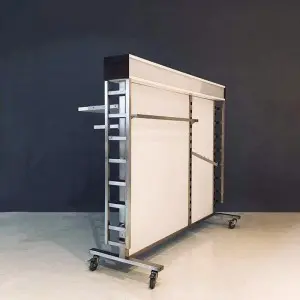វិច្ឆិកា . 11, 2024 17:56 Back to list
retail furniture
The Evolving Landscape of Retail Furniture Trends, Innovations, and Consumer Preferences
The retail furniture industry is currently experiencing a transformative phase, driven by changing consumer preferences, technological advancements, and the increasing importance of sustainability. As our living spaces evolve and the way we shop continues to shift dramatically, understanding these dynamics becomes crucial for both consumers and retailers in the furniture market.
Consumer Trends Shaping the Industry
One of the most notable trends in retail furniture is the growing demand for personalization and customization. Modern consumers seek pieces that not only fit their spaces but also reflect their personal style and preferences. This shift has prompted retailers to offer customizable options, enabling customers to choose colors, materials, and sizes. For instance, brands like IKEA have integrated design tools into their websites, allowing customers to visualize how different furniture pieces will look in their homes. This personalized shopping experience enhances customer satisfaction and fosters brand loyalty.
Another significant trend is the rise of multi-functional and space-saving furniture. As urban living spaces become increasingly compact, consumers are drawn to furniture solutions that maximize utility without compromising aesthetics. For example, sofa beds, nesting tables, and extendable dining tables are gaining popularity, particularly among younger generations, who prioritize affordability and space efficiency. Retailers responding to this trend are rethinking traditional designs, focusing on innovative solutions that blend functionality with style.
The Role of Technology
The integration of technology in the retail furniture sector is revolutionizing the way consumers shop. Virtual reality (VR) and augmented reality (AR) technologies allow customers to visualize how furniture will look in their homes before making a purchase. For instance, apps like Houzz and Wayfair enable users to overlay virtual furniture in their physical spaces using their smartphones or tablets, helping them make informed decisions. This immersive shopping experience not only enhances customer engagement but also reduces the likelihood of returns, which has been a significant issue in the online furniture market.
retail furniture

Moreover, online shopping has seen exponential growth in the furniture sector. With the convenience of browsing and purchasing from home, more consumers are turning to e-commerce for their furniture needs. Retailers are responding by enhancing their online platforms, offering detailed product descriptions, high-resolution images, and user reviews to build trust and encourage purchases. Additionally, providing seamless delivery and assembly services has become paramount to meet the demands of the modern consumer.
Sustainability in Retail Furniture
As environmental consciousness rises among consumers, sustainability has become a key consideration in the retail furniture industry. Many consumers are now inclined to purchase products that are environmentally friendly, ethically sourced, and manufactured using sustainable practices. Retailers are increasingly highlighting their commitment to sustainability by adopting eco-friendly materials, such as reclaimed wood, and ensuring their manufacturing processes minimize waste. Brands like West Elm and CB2 have made significant strides in offering sustainable furniture lines, catering to the eco-conscious consumer.
Furthermore, the circular economy is gaining traction in retail furniture. Concepts like furniture recycling, upcycling, and resale are becoming popular as consumers seek to reduce waste and give new life to old pieces. Retailers are tapping into this trend by offering take-back programs and second-hand marketplaces, enabling customers to exchange or sell their used furniture. This shift not only supports sustainability but also promotes a sense of community among consumers.
Conclusion
The retail furniture landscape is evolving in response to changing consumer expectations, technological innovations, and a greater emphasis on sustainability. Retailers who embrace personalization, leverage technology, and prioritize environmentally friendly practices are well-positioned to thrive in this dynamic market. As consumers continue to seek out products that align with their lifestyles and values, the future of retail furniture promises to be both exciting and sustainable. With these trends shaping the industry, both consumers and retailers must stay informed, adapting to the ongoing changes that define the realm of furniture retail.
-
The Benefits of Electronic Shelf Labels for Modern Stores
NewsJul.01,2025
-
Space-Saving Retail Store Furniture Designs for Small Shops
NewsJul.01,2025
-
Slatwall vs. Gridwall: Which Store Fixture is Right for Your Business?
NewsJul.01,2025
-
Shop Fittings: Essential Elements for a Functional Retail Space
NewsJul.01,2025
-
How to Design a Minimalist Cosmetic Shop Display
NewsJul.01,2025
-
Creative Clothes Shop Display Ideas to Attract More Customers
NewsJul.01,2025


















































































































